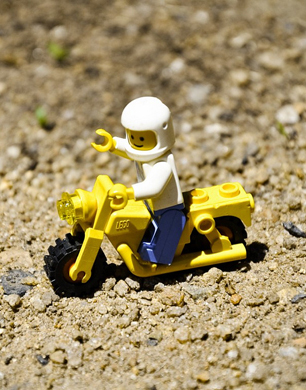The UK toy industry is huge and is worth a whopping £2.9 billion, despite the overall market declining by one per cent in 2013. Many industry experts put the fall in sales down to a number of reasons including the lack of a Hollywood blockbuster movie, which always boosts toy sales and the fact that parents are becoming stronger and resisting the pressure that many children pile on commonly called pester power. Educational toys however are considered by many to be an important part of bringing up a child and studies show that both boys and girls up to the age of 12 benefit from using toys with an educational purpose.
Different age groups enjoy benefits from playing with different types of toys, with four-year-olds playing with vastly different educational toys than 10-year-olds for example. Schools need to ensure that they work closely with the best suppliers to take advantage of the toys that they feel are likely to provide most benefit to their pupils learning. Companies such as www.hope-education.co.uk for example even provide sand and water, which although is fun, can simultaneously be educational for a young child.
Let’s break up these age groups and take a look at a selection of some of the best educational toys for each group:
Under Fours
While children of all ages benefit from playing with jigsaws, getting them started early is the best way to ensure they master the different techniques required to complete a puzzle. Being able to recognise a picture and recreate the same picture from a jigsaw puzzle from a young age, makes it easier to learn different tricks to completing a more complex puzzle when they get older – separating the straight edged pieces from the corners and the middle pieces and so on.
The other benefit to teaching your child how to complete jigsaws is that they are a universal toy, ensuring that they can be passed down to younger siblings as and when your child gets too old and requires more testing, larger puzzles to complete. This means that jigsaws are popular in schools, because they can be used by new classes each year, and also by childminders, who may have a group of children of varying ages to care for.
Five to Nine
An interactive globe is a great learning toy that is beneficial for both boys and girls. Instead of simply using a map and teaching your children where different countries are, you can use an interactive globe to make learning geography more fun. These globes can also be used in schools and they usually come with a choice of modes, allowing your children to develop problem-solving skills.
If you want to teach your child about science and nature, try buying a live butterfly garden set that can be played with at home or used at school. It teaches children about a butterfly’s life cycle, as well as the responsibility of careful handling and management of nature.
10 Upwards
When it comes to educating older children, you need to find a good balance between keeping it interesting and ensuring it still has a fun element to it, without making it feel too junior for them. A child’s telescope is a great way to encourage older children to learn more about space and many of these come complete with a space map – perfect for budding astronomers.
LEGO is something that can be used at all ages to teach children how to learn about construction, combat challenges and be creative with their ideas. The older your child gets, the more complex the LEGO set can be, including smaller pieces and complicated designs.
It is imperative for both parents and teachers to understand the importance of using different types of toys to develop children’s minds of all ages. The UK toy industry is improving its technology every year and using toys for teaching purposes can have a positive impact on children, if the correct toys are used for educational reasons.


